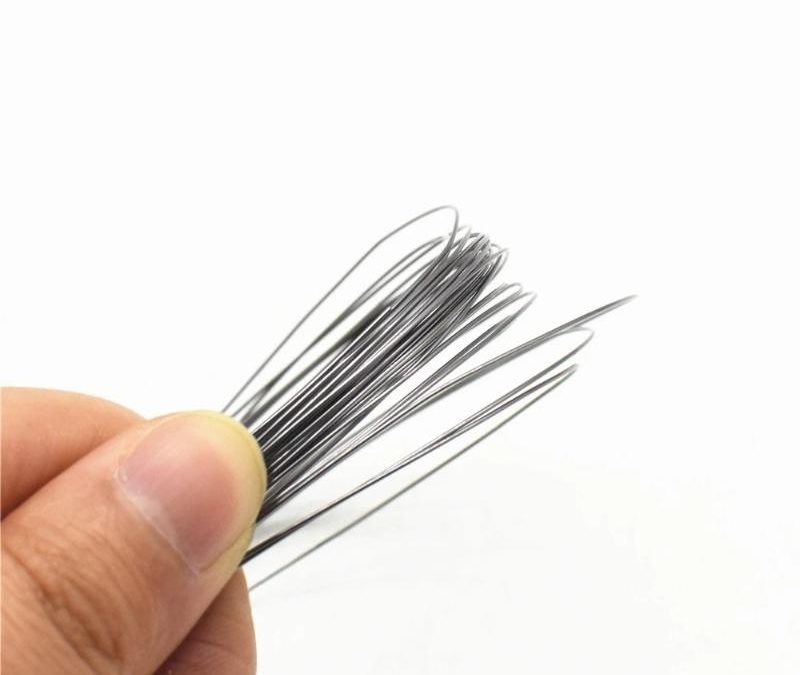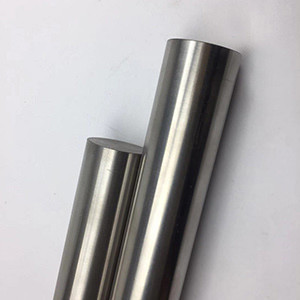Tantalum – History And Uses
Tantalum (Ta) is the 73rd element on the periodic chart. Formerly known as tantalium, the name is derived from Tantalus, a mythological Greek figure, known for his eternal punishment in which he stood in a pool of water, always receding before he could bend and take a drink, and beneath a fruit tree with low branches, with the fruit ever eluding his grasp.Pure tantalum wire, 90%Tantalum 10%Tungsten, 97.5%Tantalum 2.5%Tungsten, 60%Tantalum 40%Niobium wire are all manufactured by the same technology. They are the most common tantalum alloy products.
Tantalum was discovered in Sweden in 1802 by Anders Ekeberg, but one year earlier, Charles Hatchett had unknowingly discovered Tantalum when he unearthed another element columbium. In 1809, English chemist William Wollaston, compared the oxides derived from both columbium and columbite and concluded that the two oxides, were identical, despite their difference in measured density and kept the name tantalum. Other scientists confirmed these results and it was thought that columbium and tantalum were the same element. Disputing this conclusion in 1846, German chemist Heinrich Rose, argued that there were two additional elements in the tantalite sample, and he named them after the children of Tantalus: niobium (from Niobe, the goddess of tears), and pelopium (from Pelops). The supposed element “pelopium” was later identified as a mixture of tantalum and niobium, and it was found that the niobium was identical to the columbium already discovered in 1801 by Hatchett.
In 1866, Swiss chemist Jean de Marignac proved that there were only two elements. De Marignac was the first to produce the metallic form of tantalum in 1864, when he reduced tantalum chloride by heating it in an atmosphere of hydrogen. Early investigators had been only able to produce quantities of impure tantalum, and Werner von Bolton was the first person to produce relatively pure ductile metal in 1903.
Tantalum is quite rare and is known as a hard, blue-gray, lustrous transition metal. Now easily fabricated, its characteristics include very efficient conductivity of heat and electricity, is highly resistant to corrosion and has a very high melting point of 3017 °C (boiling point 5458 °C) exceeded only by tungsten, rhenium and osmium for metals, along with carbon. Hydrofluoric acid can be used to dissolve the material. Tantalum ores often contain significant amounts of niobium, which itself is a highly valuable element requiring extraction of both metals in order they may be marketed.
The largest production of tantalum is mined in Australia. However, other countries such as China, Ethiopia, and Mozambique mine ores with a higher percentage of tantalum, therefore, producing a significant percentage of the world’s output. Thailand and Malaysia also produce Tantalum as a by-product of the tin mining. Future sources of supply of tantalum are being discovered in Egypt, Saudi Arabia, Canada, the U.S., Greenland and Brazil.
Tantalum Wire Description
Tantalum wire can take hydrogen, oxygen and nitrogen away from the atmosphere and is the ideal product for vacuum applications in the lighting industry. Tantalum is corrosion resistant and has good thermal conductivity. It can be used in manufacture of heating elements, vacuum tubes and other high temperature parts.
XOT specializes in providing high purity & uniform shaped tantalum wire with the highest possible density, it can be used in semiconductor, chemical vapor deposition (CVD) and PVD, etc. We also supply tantalum tungsten and tantalum niobium alloy wires.
Dimensions for tantalum wire, Tantalum tugnsten alloy and Tantalum niobium alloy wire
Specification: ASTM B365, ASTM F560 (Medical Grade)
Size (Diameter) & Tolerance:
0.30~4mm (0.012″~0.157″)
0.10mm~0.15mm, tolerance:±0.005″
>0.15mm~0.30mm, tolerance: ±0.006″
>0.30mm, tolerance: ±0.007″
Supplied as: in roll, on spool, and straight wire.
Mechanical properties for Ta metal wire:
| Product condition | Tensile strength (MPa) | Elongation, % |
|---|---|---|
| Annealed | 300~600 | 10~30 |
| Half annealed | >600~1000 | <5 |
| Unannealed | >1000 | <5 |
Materials Chemical composition for Ta and Ta alloy wire:
Grades: R05200, R05400, UNS Grade R05252 (Ta2.5W), UNS Grade R05255 (Ta10W), UNS Grade R05240 (Ta40Nb)
| Element | R05200 | R05400 | R05255 | R05252 | R05240 |
|---|---|---|---|---|---|
| C | 0.01 | 0.01 | 0.01 | 0.01 | 0.01 |
| O | 0.015 | 0.03 | 0.015 | 0.015 | 0.02 |
| N | 0.01 | 0.01 | 0.01 | 0.01 | 0.01 |
| H | 0.0015 | 0.0015 | 0.0015 | 0.0015 | 0.0015 |
| Fe | 0.01 | 0.01 | 0.01 | 0.01 | 0.01 |
| Mo | 0.02 | 0.02 | 0.02 | 0.02 | 0.02 |
| Nb | 0.1 | 0.1 | 0.1 | 0.5 | 35.0–42.0 |
| Ni | 0.01 | 0.01 | 0.01 | 0.01 | 0.01 |
| Si | 0.005 | 0.005 | 0.005 | 0.005 | 0.005 |
| Ti | 0.01 | 0.01 | 0.01 | 0.01 | 0.01 |
| W | 0.05 | 0.05 | 9.0–11.0 | 2.0–3.5 | 0.05 |
The Classification Of Tantalum Wire
Tantalum wire can be classified according to its chemical purity, performance, use, and status.
- According to its purity, can be divided into 3 categories: metallurgical tantalum wire, purity 99.0% Ta; high purity tantalum wire, purity 99.0% -99.9% Ta; ultra-high purity tantalum wire, purity 99.9% -99.99% Ta.
- According to performance, tantalum wire can be divided into 4 categories: chemical corrosion-resistant tantalum wire; high temperature resistant high-strength tantalum wire; oxygen-resistant brittle tantalum wire; capacitor tantalum wire.
- The tantalum wire of the capacitor is divided into 3 categories according to its uses: tantalum wire for the lead of solid tantalum electrolytic capacitor; tantalum wire for liquid tantalum electrolytic capacitor leads; tantalum wire for capacitors with reliability indicators.
- According to the status, the capacitor tantalum wire can be divided into three categories: soft state, tensile strength σb = 300 ~ 600MPa; semi-hard state, tensile strength σb = 600 ~ 1000MPa; hard state, tensile strength σb> 1000MPa.、
The Uses Of Tantalum Wire
- Tantalum wire is the most used in the electronics industry and is mainly used for the anode lead of tantalum electrolytic capacitors. Tantalum capacitors are the best capacitors, and about 65% of the world’s tantalum is used in this field.
- Tantalum wire can be used to compensate for muscle tissue and to suture nerves and tendons.
- Tantalum wire can be used for heating parts of a vacuum high-temperature furnace.
- High anti-oxidation brittle can also be used to make tantalum foil capacitors. It can work in potassium dichromate at high temperature (100 ℃) and extremely high flash voltage (350V).
- In addition, can also be used as a vacuum electron cathode emission source, ion sputtering, and spray coating materials
XOT provides high purity tantalum wire and rod in many different elements for distribution to universities, research labs and manufacturing companies in numerous purities and form factors (i.e., foil, sheet, ribbon, shot, pellets, pieces, powder, sputtering targets, discs and custom fabricated parts). We are able to fabricate all the above to your specification. For form overviews on tantalum wire and rod manufacturing or additional detailed information on XOT’s other production offerings,please contact us.


